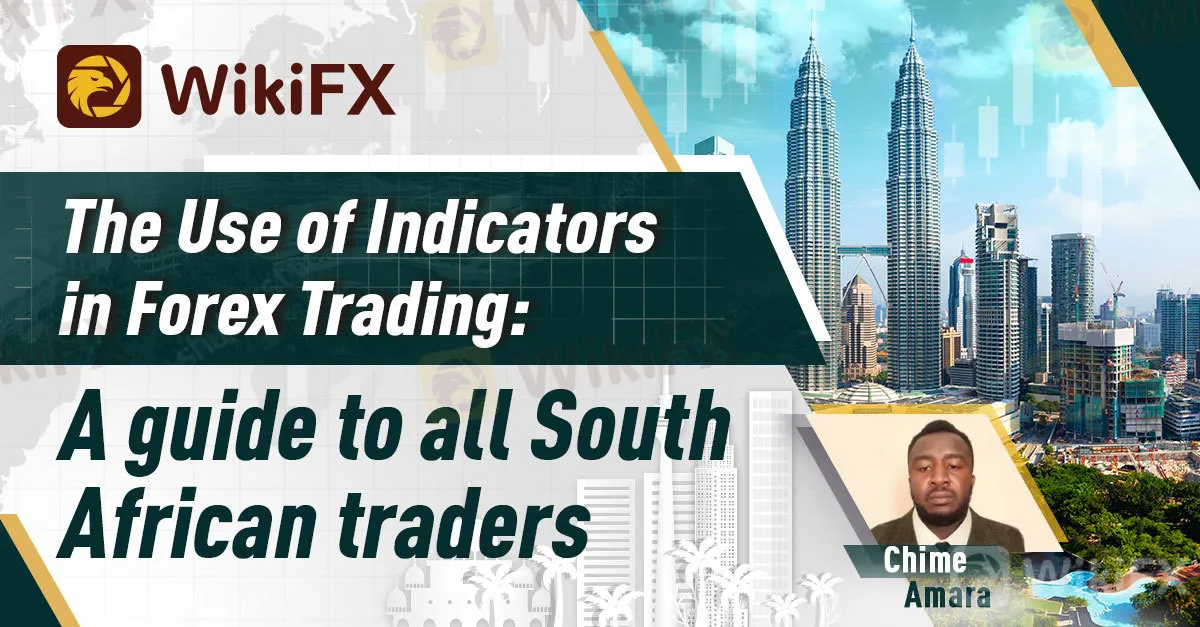简体中文
繁體中文
English
Pусский
日本語
ภาษาไทย
Tiếng Việt
Bahasa Indonesia
Español
हिन्दी
Filippiiniläinen
Français
Deutsch
Português
Türkçe
한국어
العربية
The Use of Indicators in Forex Trading: A guide to all South African traders
Abstract:The quest to make accurate predictions on the possible price movement for a given forex pair within a certain timeframe has engineered the creation of many forex indicators designed today. These indicators are structured to mimic price actions in signaling the possible market direction within a set period. Many indicators have been known to be near accurate in predicting market directions while some are known to lag. We have therefore exposed in this work the major advantages and disadvantages of using an Indicator while analyzing the market.

By: Chime Amara
What is a forex indicator?
Forex indicators are technical tools used to predict market trends based on the volume of trades carried out in a particular direction. Most forex Indicators are designed to mimic previous price movement patterns in forecasting the new trend to follow at a given period. This helps traders to make better decisions on when to buy or sell a particular pair in the forex market.
Types of Forex Indicators
There are four main divisions of forex indicators. This grouping is based on the specific functions they perform. They include below:
A. Volume Indicators
B. Support and Resistance Indicators
C. Trend Indicators and
D. Oscillator Indicators

Volume Indicators: This type of Indicator measures the downward or upward pressure coming into the market. Often high market volatility is used to signal a change of trend. Examples of Volume Indicators are Bollinger Bands, ATR Indicators, etc.
Support and Resistance Indicators: This is an important indicator used by traders in setting their entry and exit positions. Areas of strong support are used to mark the entry for a buy order while such points where prices meet strong opposition; are used to set sell orders. Examples of support and Resistance Indicators are Pivots points, Donchian channels, etc.
Trend Indicator: This type of Indicator is used in determining the prevalent market direction over a given period. Often, trend Indicators help the trader in understanding the market direction over the long term: say weekly or monthly. This is a special guide for swing traders. Examples: Moving Average, Ichimoku cloud, Average Direction Index (ADX), etc.
Oscillator Indicators: This type of Indicator is used to detect the market momentum. Often, the Oscillator Indicator mimics price actions. Hence they fall when market prices fall and rise when prices go up. Examples: Relative strength Index, Stochastic, Commodity Channel Indicator (CCI), Moving Average Convergence Divergence (MACD), etc.
Advantages of using an Indicator
· Aids the trader in making decisions.
· Helps in detecting the market trend.
· Assists the trader in choosing stop loss and take profit target.
Disadvantages of using an Indicator
A. Lagging: A major disadvantage of using forex indicators is the fact that they often lag. Lagging here means; they often waited for the market to execute some of its actions before they pick up or reflect the same.
B. Not good for interpreting fundamentals: Most forex indicators depend largely on previous price actions and do not take count of present fundamental factors moving the market.
C. Complexity in its use: Often it is very difficult for beginners to understand the function of a given indicator.

Disclaimer:
The views in this article only represent the author's personal views, and do not constitute investment advice on this platform. This platform does not guarantee the accuracy, completeness and timeliness of the information in the article, and will not be liable for any loss caused by the use of or reliance on the information in the article.
Read more

IG Group Enters Direct Investment Market with £160 Million Freetrade Buyout
IG Group, a prominent global financial trading and investment company, has announced its acquisition of Freetrade, a commission-free investment platform, for £160 million. The deal, funded through IG’s existing capital resources, marks a strategic move to expand its footprint in the United Kingdom.

Cinkciarz.pl Under Fire: Frozen Accounts, Missing Funds
Cinkciarz.pl, one of Central Europe’s largest currency exchange platforms, has made headlines after accusing major Polish banks of conspiring to undermine its operations. The company has threatened legal action amounting to 6.76 billion zlotys ($1.6 billion) in damages. However, the platform is now under intense scrutiny following allegations of fraud and the mismanagement of customer funds.

BSP and JICA Renew Partnership to Expand Credit Risk Database for SMEs in the Philippines
On December 11, 2024, a significant milestone was reached in the Philippines' financial sector as the Bangko Sentral ng Pilipinas (BSP) and the Japan International Cooperation Agency (JICA) officially signed the ‘Records of Discussion’ for the second phase of the Credit Risk Database (CRD) project. The ceremony at the BSP headquarters in Manila marked a pivotal moment in widening access to financing for small and medium enterprises (SMEs) across the country.

Why Copy Trading is Perfect for New Investors
Learn why copy trading is ideal for new investors. Follow expert traders, minimize risks, and start earning confidently—no prior expertise is required.
WikiFX Broker
Latest News
How Long Can the Dollar Remain Strong?
Forex Price Trend Prediction! | Come be a New Year Price Winner!
HFM NY Special Offer!
How a Promised RM1.4 Million Return Turned into a Costly Scam
First Unfair Trading Case Reported Under South Korea’s Virtual Asset User Protection Act
Cinkciarz.pl Under Fire: Frozen Accounts, Missing Funds
“Predict and Win” Big Rewards! Join the Contest Now
South Korean President Yoon Suk Yeol's Arrest Shakes Markets
Titanium Capital LLC Ponzi Scheme: Henry Abdo Admits Fraud, Impacting Over 200 Investors
South Korea's Crypto Regulation Updates for 2025
Currency Calculator






